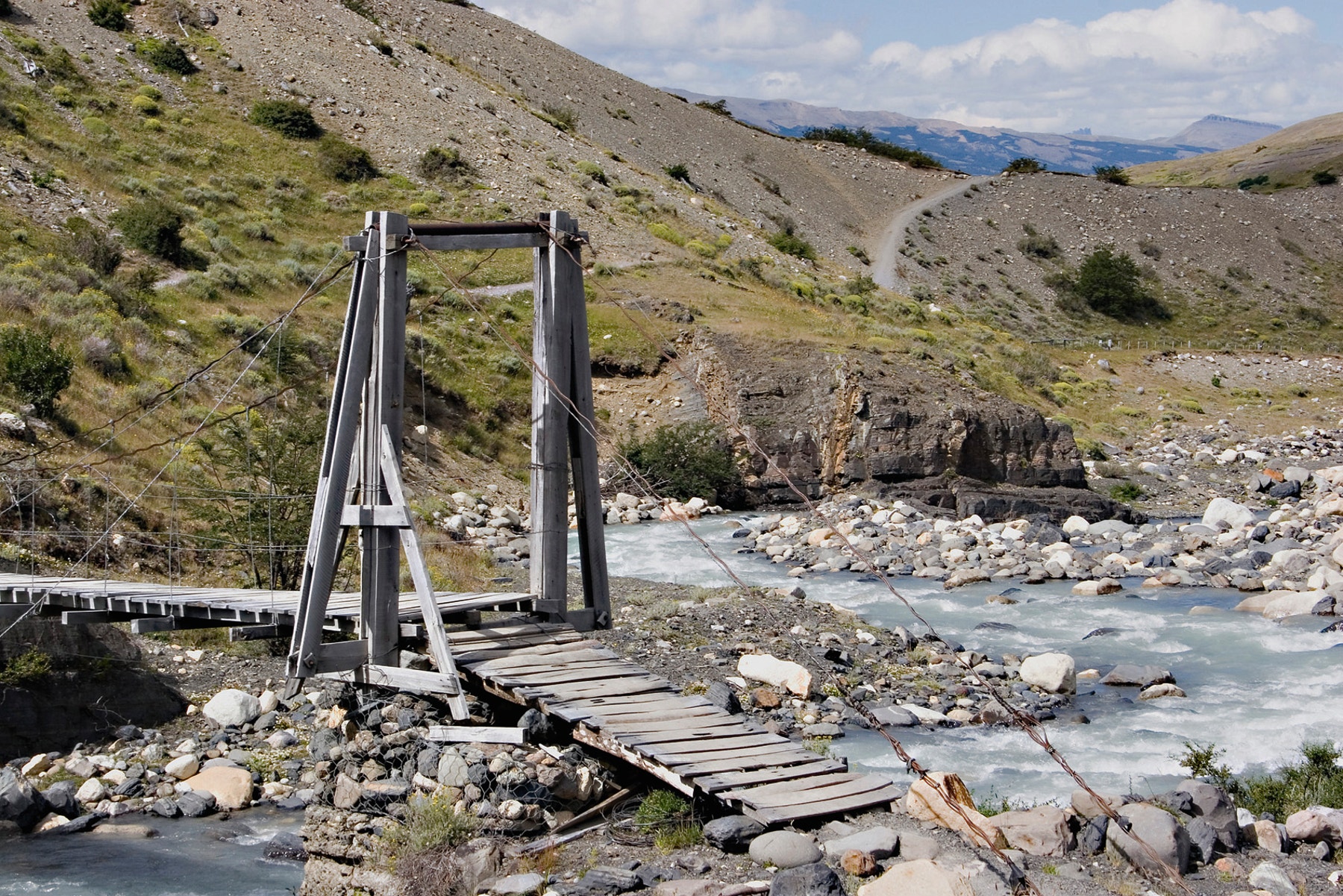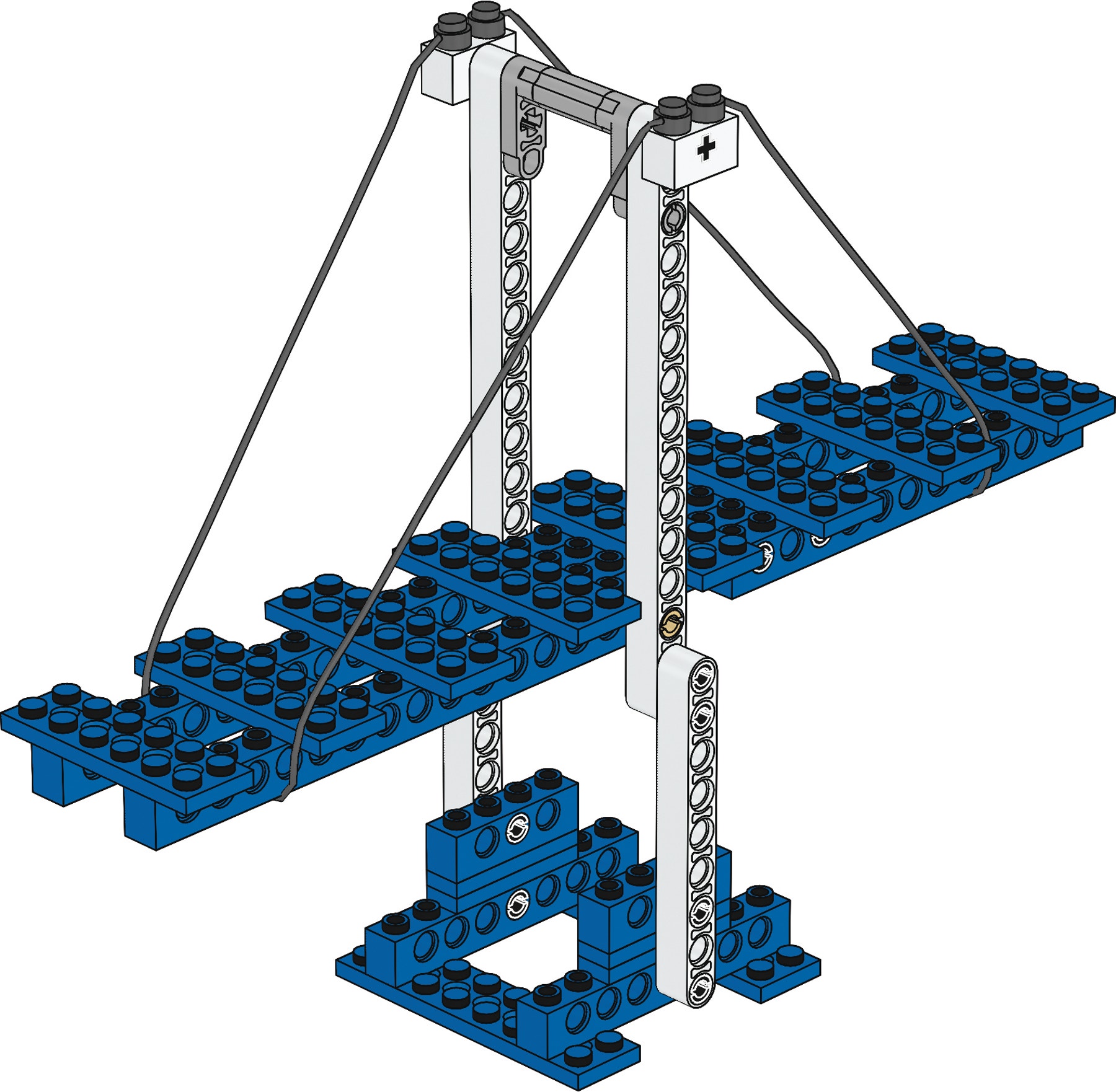Bridge
Apply knowledge and skills related to structures, stability, safety, and fair testing.

The Problem
(3-5 Minutes)
Bridges have been used since early times to cross natural barriers. These barriers can take the form of streams and rivers. Sometimes the barrier is simply a gap in the terrain – a ravine or canyon. Over time the design of bridges has evolved. In prehistoric times a simple bridge would have been a fallen tree trunk placed across a stream. Nowadays, large bridges are major engineering works requiring a team of designers and an army of construction workers.

Design Brief
(3-5 Minutes)
Your task is to design and build a large and safe bridge that will be used by people who need to cross a river.
Motivation
To help in the design process, instruct the students to look at the picture on the front of the unit and read the accompanying text.
Alternatively, let the students search the Internet to learn more about the appearance, structure and function of the 4 types of bridges; beam bridge, cantilevered bridge, suspension bridge, and cable stayed bridge, from now and in the past.
Discuss the constraints and functions they will have to take into account.
Suggested Model Solution
Note: You are advised not to share this image with students.

Fair Testing and Fun
(15-20 Minutes)
While the activity is in progress, encourage the students to relate their
knowledge, skills and understanding to the task at hand by asking:
Which type of bridge will you base your model bridge on?
What different sorts of parts will your bridge need?
How will you ensure that the bridge is strong?
How will you ensure that the bridge is rigid?
How will you ensure that the bridge is stable?
How will you ensure that the bridge is safe to use?
When the bridge is being used which parts will be in compression and which in tension?
When the activity is almost finished, encourage the students to reflect on both the product that they have produced and the processes they have used by encouraging the students to:
Carry out tests to evaluate the performance of the bridge:
- How much load can it take before breaking?
- How much load can it take before deforming?
- Does uneven loading cause the bridge to twist or fall over?
- Will people using the bridge be in any danger?
Record their design by drawing it or taking digital photos of it.
Add notes describing the way the model works and how this might be improved to get better performance.
Describe how to ensure safe use of the model.
Write briefly on what went well in their design task and what they could have done to improve it.
Teacher Support
Students will be able to apply the knowledge and skills of:
Simple machines, mechanisms and structures
Engineering design
Communicating and team working
Applying principles of safety and product reliability
9686 Simple & Powered Machines Set (two students per set recommended)
Materials for decoration
Materials to ensure safety e.g. gate, fence, barrier, lights
Crosscutting Concepts
Cause and effect: Mechanism and explanation
Systems and system models
Structure and Function
Stability and change
Science and Engineering Practices
Asking questions and Defining Problems
Developing and using models
Planning and carrying out investigations
Analyzing and interpreting data
Using mathematics, Informational and Computer Technology, and computational thinking
Constructing explanations and designing solutions
Engaging in argument from evidence
Obtaining, evaluating, and communicating information
Common Core Mathematics Standards
MP4 / 7.EE.B / 8.G.A
Common Core English Language Arts
SL 6.1 / SL 6.4 / SL 6.6 / SL 7.1 / SL 7.4 / SL 8.1 / SL 8.4 / SL 8.6
RST 6-8.1 / RST 6-8.2 / RST 6-8.3 / RST 6-8.4 / RST 6-8.5 / RST 6-8.10
WHST 6-8.2 / WHST 6-8.4
Student Material
Share with:
 Google Classroom
Google Classroom



